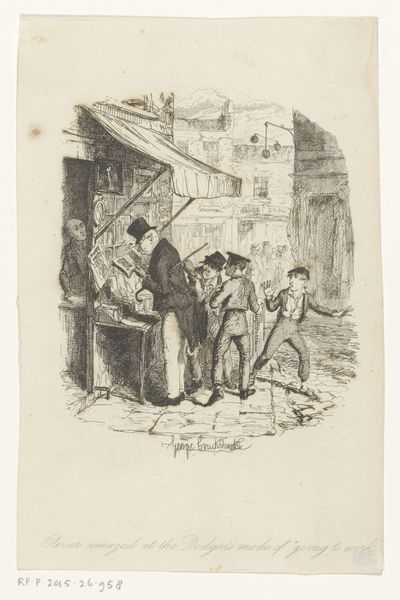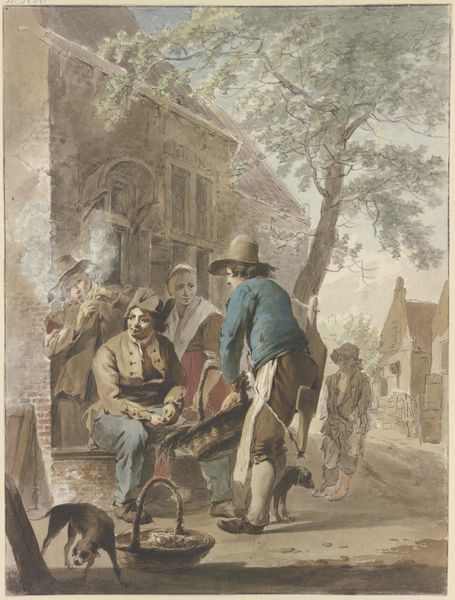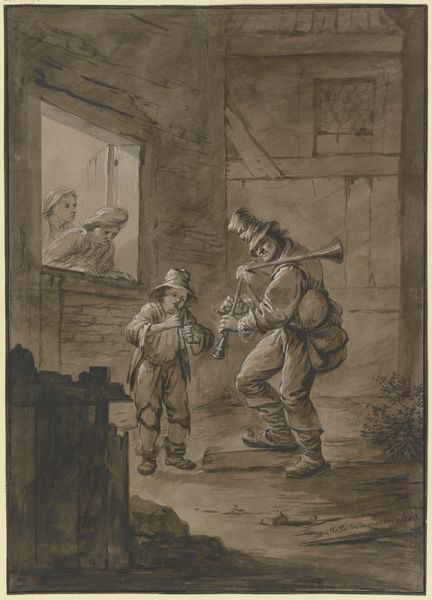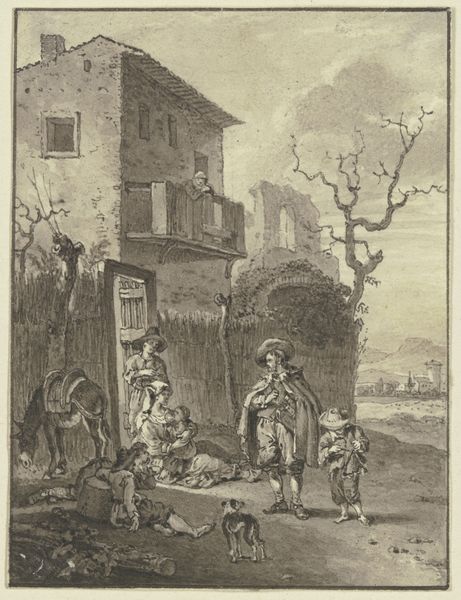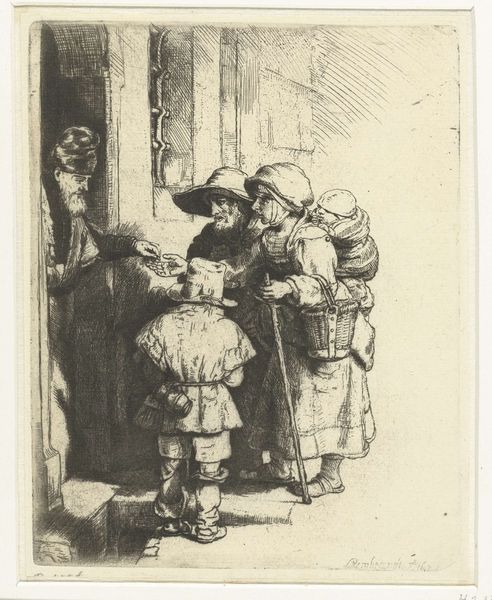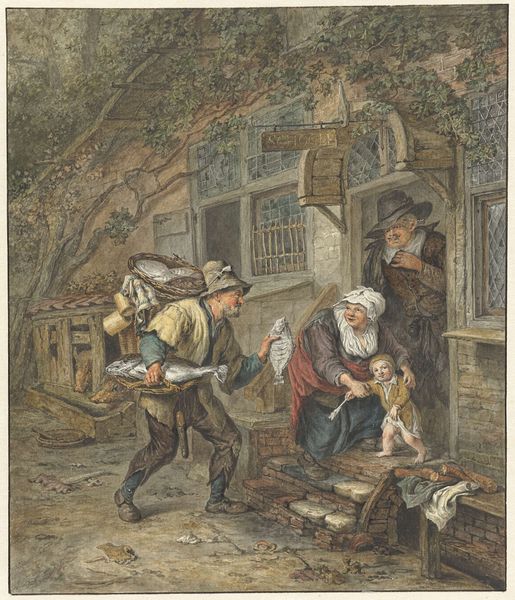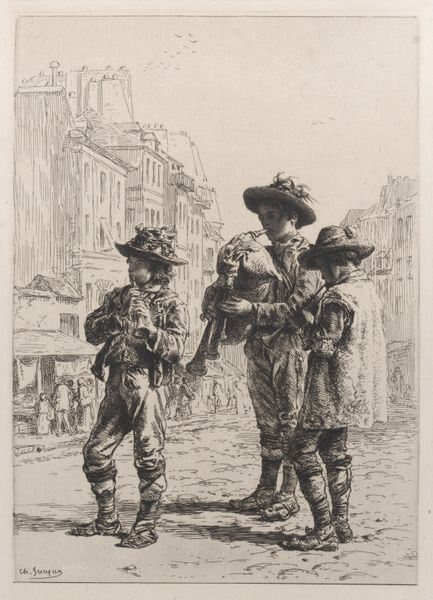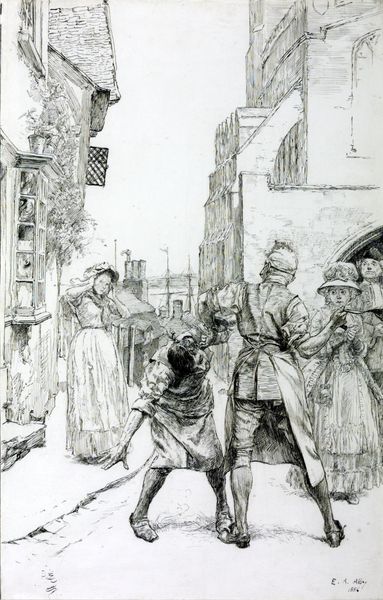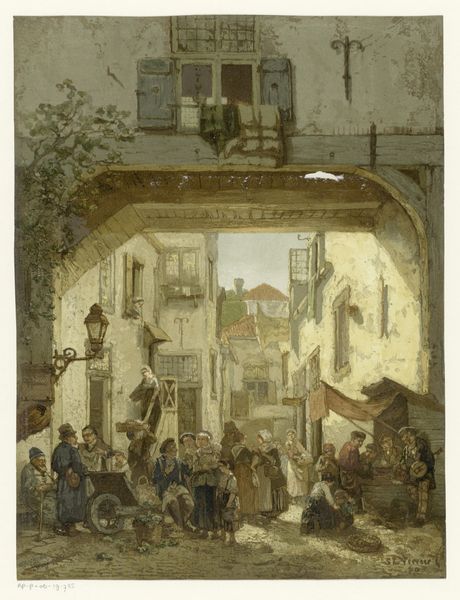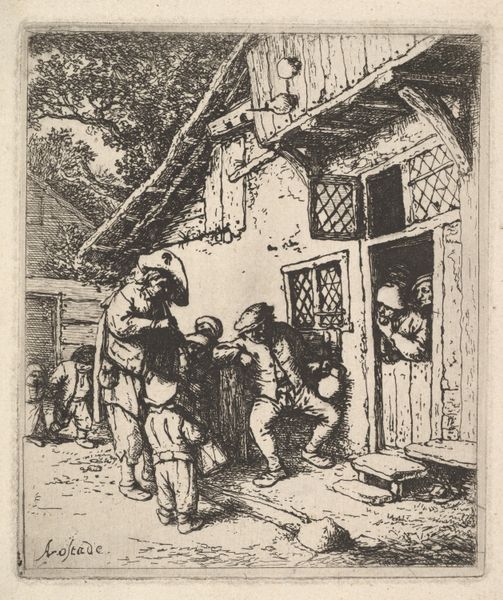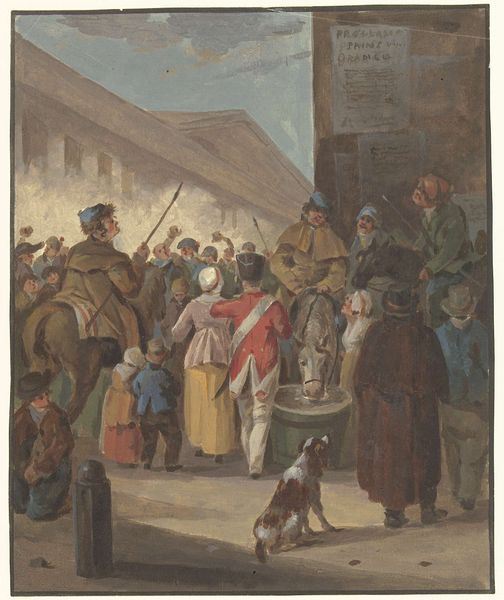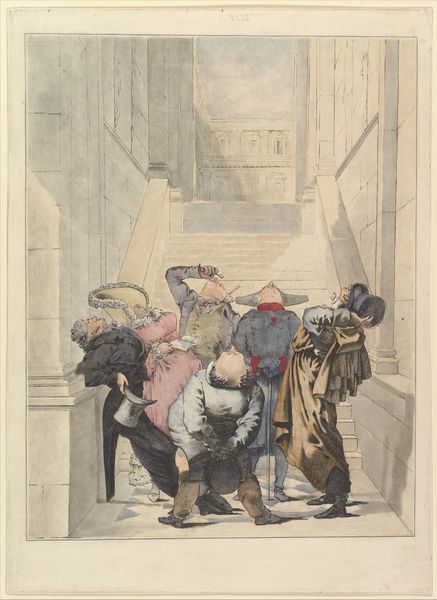
Dimensions: height 278 mm, width 179 mm
Copyright: Rijks Museum: Open Domain
Curator: What a wonderfully somber scene! "The Creditors," made circa 1855-1856 by Matthijs Maris. The Rijksmuseum houses this work done in pencil, watercolor, charcoal, and colored pencil on paper. The collection of figures gathered at this doorway… I find it immediately evocative of Victorian anxieties about poverty and social hierarchy. Editor: My initial reaction is one of muted drama. The limited palette almost drains the scene of life, focusing the eye instead on the gestures and implied narrative. It’s like a snapshot of societal pressures, captured in delicate washes. Curator: Absolutely, and think about who these ‘creditors’ might be, what social power do they represent in this society and whom do they visit? Do these figures carry debt or do they visit those in debt? The expressions on their faces, or lack thereof, invite us to contemplate systems of debt, dependence, and the Victorian moral landscape. Editor: It raises some pertinent questions about the institutional frameworks in that moment of history, how debt impacted visibility in social spheres, as well as self-worth. Notice how the doorway and architectural surrounding become framing tools: this setting traps the depicted in socio-economic forces! Curator: Indeed. The piece reflects the public role of art by prompting discussions around themes like social justice and the responsibilities of both the individual and the institutions, don't you agree? There's a clear commentary on the anxieties of the era woven into Maris' artistic choices. Editor: Yes. Looking through a contemporary lens, one cannot disregard the image's implications in regard to today's global economic system and class struggle. Maris prompts us to discuss power imbalances through materiality and composition in that image, and therefore "The Creditors" finds itself anchored in timeless discussions around social justice, reminding us of historical burdens that still weigh heavily today. Curator: It serves as a historical artifact and an aesthetic engagement with contemporary anxieties. Editor: Leaving us both contemplatively shaken and enlightened by art's lasting relevance.
Comments
No comments
Be the first to comment and join the conversation on the ultimate creative platform.
